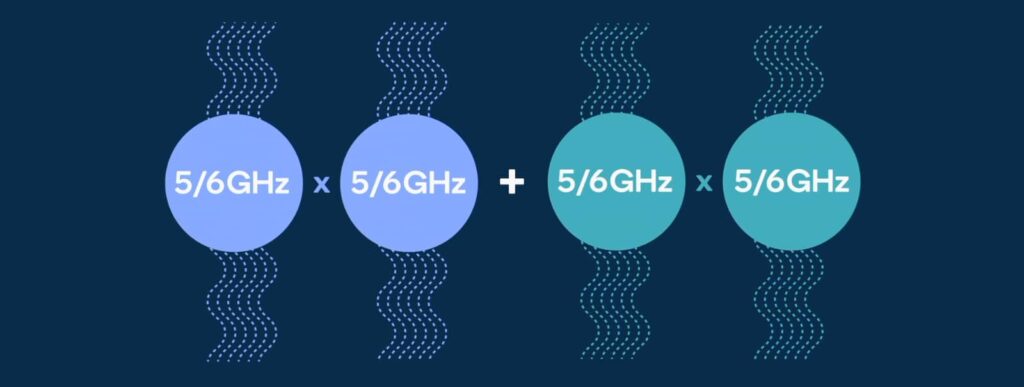It’s a while off, but a technology to improve WiFi considerably is coming, as wireless networking adds more speed and bandwidth with the upcoming WiFi 7 tech.
Staying up to date in technology is difficult at the best of times, but when there’s new tech right around the corner, it can be downright awkward to make the case for an update.
In 2022, buying networking gear is a little like that.
The good news is that no matter what you buy, your new network is probably going to be a whole lot better than your old network, and given that’s the most likely reason to buy networking gear, that’s great news. However, on the flip side, no matter what you buy will also probably be out of date by 2023 or 2024, which is when the next generation of WiFi tech is supposed to be out.
Called “WiFi 7”, it also comes with one of those “802.11” names you’ve probably seen on wireless networks forever. WiFi 7 is 802.11be, and it is the latest approach for high-speed connectivity, but what does it mean for you, and when will WiFi 7 be launching in Australia?
These are all numbers… what really is WiFi 7?
Aside for some marketing about how “WiFi 7” is the next generation in wireless networking technology, WiFi 7 takes what WiFi 6E has set up before it by bolstering extra networking spectrum for more devices, as well as devices with higher capacity.
Before the days of WiFi 6 and WiFi 6E, wireless networks would offer one band, typically a 2.4GHz band. They still do, and typically that’s reserved for devices with less speedy traffic, such as phones and web activity. As networks improved, network makers added a 5GHz band, providing more spectrum to work with at higher speeds.
If you own a device that runs both a 2.4GHz and 5GHz band, your router will typically send low priority traffic to the band with the lower number, and higher priority speed-reliant traffic to the one with the bigger number. Network gear makers have added better chips to let you get the most speed out of each, so much that we’re talking speeds able to rival many wired networks.
These days, a WiFi 5 or WiFi 6 network is a perfectly fast environment for most homes, and there are different approaches to how those networks should look in most homes.
For instance, if you have a small cottage-style home and can place your router in the centre, the network activity will be sent out from the middle for the entire home. That makes the case for bigger routers with lots of antennas. Meanwhile, if you have a large home that travels out or out and up, a mesh system will let you place several wireless access points and turn your network into a Venn diagram of sorts, allowing devices to jump onto a network strengthened throughout the home.
Depending on which WiFi type you opt for will typically determine the maximum speed and bandwidth, though wireless has also been changing.
In WiFi 6 (802.11ax), you could get a theoretical maximum of 9.6Gbps across your wireless network depending on the chip your devices used. You’re never likely to hit anywhere close to that, but the spectrum you’re using can help.
In WiFi 6E, that theoretical maximum is technically the same, but because WiFi 6E adds an extra band with higher capacity for newer devices, hitting those theoretical speeds becomes more practical than it ever has before.
WiFi 7 evolves this, adding bands and bandwidth, and increasing speed significantly, provided you have the device that can use it, potentially offering more uses of 5 and 6GHz bands.
WiFi 6E versus WiFi 7
The difference between WiFi 6E and WiFi 7 is notably speed and bandwidth, while the difference between WiFi 6 and WiFi 6E is more or less just bandwidth. In the former, there’s more of everything, while the latter, there’s more bandwidth to work with for what you have.
It’s possibly a more restrained difference when talking WiFi 6 versus WiFi 6E, because in WiFi 6E, the extra band you get — the 6GHz band — only at present works with devices that can look for it.
Simply put, buying a WiFi 6E router won’t guarantee your current slate of products more speed at all. You’ll get 2.4 and 5GHz bands you can use for your gadgets now, and a 6GHz band that can only work with gadgets that support WiFi 6E.
There aren’t a whole heap of those, mind you, but if you’ve bought a Google Pixel 6 range device like the Pixel 6 Pro or Pixel 6a, Oppo’s Find X5 Pro, or any of Samsung’s phones or tablets from the past few years, such as the Galaxy S22+, S22 Ultra, S21 Ultra, or Tab S8 Ultra, you’ll have WiFi 6E. Many new Windows computers will also support the tech, too.
It will likely be a similar situation when WiFi 7 rocks up, mind you, supporting new speeds and bandwidth on the new gadgets. WiFi 7 will support new bands and improved bandwidth, doubling the 160MHz of WiFi 6 and 6E to 320MHz, while the network speeds could hit as high as a theoretical 30 to 40Gbps.
You’re not likely to push that, and speeds will probably be closer to the 10Gbps, but that’s a 10 Gigabit wireless network for many, which would be a win in speed for high-speed wireless. It’s no wonder that people are calling 802.11be WiFi 7 Extremely High Throughput wireless networking, something that’ll possibly turn up in jargon later on as “EHT”.
It’s still likely a while off before Aussies are buying WiFi 7 EHT routers, however WiFi 7 is beginning to roll out in chips, which means makers are beginning to throw support into gadgets likely to come out at the end of 2022 and beyond, and that means the routers aren’t likely to be too far behind.
Should I wait for WiFi 7 or get WiFi 6/WiFi 6E?
None of this should stop you from buying a new wireless router now. If you need an updated wireless network because your current version isn’t doing your devices justice — particularly if you’re using the starter model your broadband service supplied you with — upgrading is likely to change things positively.
Whether you’re upgrading a slower older network device to something newer — such as 802.11g to 802.11ac WiFi 5 or 802.11ax WiFi 6 — you’ll see benefits, and waiting around for WiFi 7 won’t likely be beneficial to you.
Upgrade as and when you need to for WiFi, because the benefits can often outweigh the wait.
However, if you don’t need an update, and you’re considering upgrading all your gear in 2023 and later on, it may be worth waiting to see what WiFi 7 has in store. It’ll very likely be speed, range, and the ability to make more of your home feel fast over wireless.






